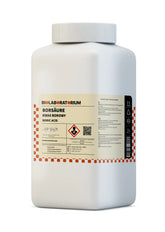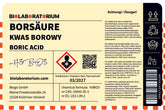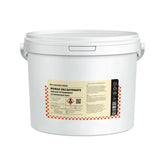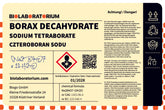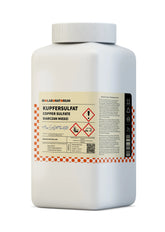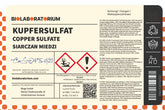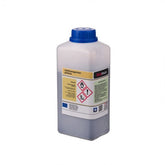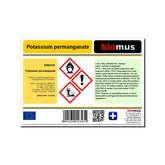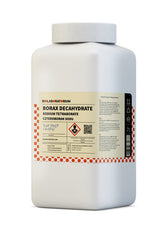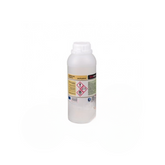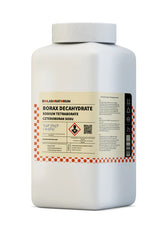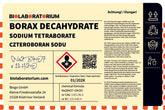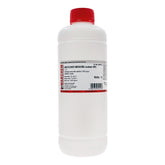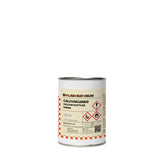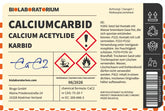The versatile Lugol's solution: From the classic to the modern laboratory assistant
Lugol's solution, named after the French chemist Jean-Guillaume-Auguste Lugol, is a chemical reagent that has been used for decades in laboratories, industry, and even in households. This versatile product has become an indispensable component in modern chemistry over time. In this blog post, we will take a closer look at the fascinating properties, applications, and special features of Lugol's solution.
The composition and properties of Lugol's solution
Lugol's solution is a mixture of elemental iodine (I₂) and potassium iodide (KI) in water. This combination gives the solution a characteristic brown-orange color. Besides its striking color, Lugol's solution is distinguished by some remarkable properties:
- Oxidizing power: Due to the iodine it contains, the solution has strong oxidizing power, which can be used for many chemical reactions and analyses.
- pH value: Lugol's solution is slightly acidic with a pH between 5 and 6, allowing its use in acidic or neutral systems.
- Solubility: Both iodine and potassium iodide are well soluble in water, which facilitates handling and use of the solution.
- Stability: When stored properly and protected from light and heat, Lugol's solution remains stable for a long time and retains its effectiveness.
Classic applications of Lugol's solution
Over time, Lugol's solution has proven to be a useful tool in various fields. Some of the best-known applications are:
Analytical chemistry
In analytical chemistry, Lugol's solution is often used as an indicator. For example, it can be used to detect starch because it produces an intense blue-black coloration with starch. Furthermore, it is used in titration, for example to determine ascorbic acid (vitamin C) or hydrogen peroxide.
Medicine and pharmacy
In medicine and pharmacy, Lugol's solution also has a long tradition. It is used to treat hyperthyroidism because the iodine it contains inhibits thyroid hormone production. In addition, it is used as a disinfectant and antiseptic.
Food industry
Lugol's solution also has its place in the food industry. For example, it can be used to detect starch in foods. Additionally, it serves as a preservative for certain products.
Photography
In classical photography, Lugol's solution was used to produce cyanotypes, a blueprint technique. Here, the iodine reacts with light-sensitive iron salts to create a blue image.
Modern applications of Lugol's solution
In addition to traditional areas of application, Lugol's solution has also opened up new fields of use in recent years. Some of these modern applications are:
Environmental analytics
In environmental analytics, Lugol's solution is used to determine heavy metals, such as mercury or arsenic, in water and soil samples. Due to its oxidizing power, it can detect and quantify these pollutants.
Materials science
In materials science, Lugol's solution is used for characterizing polymers and plastics. For example, it can be used to study the crosslinking or degradation of materials.
Biotechnology
Lugol's solution has also found its place in biotechnology. Among other uses, it serves to detect polysaccharides, such as cellulose or chitin, in biological samples.
Forensics
In forensics, Lugol's solution is used to make latent fingerprints visible on surfaces. The iodine reacts with the fats and proteins contained in fingerprints to clearly highlight the traces.
Safety aspects and storage of Lugol's solution
Although Lugol's solution is a versatile and useful reagent, some caution must be exercised when handling it. The iodine it contains is toxic at higher concentrations and can cause health problems if it comes into contact with skin or is ingested. Therefore, it is important to take appropriate safety measures, such as wearing gloves and ensuring good ventilation, when using the solution.
When storing Lugol's solution, care should be taken to protect it from light and heat, as these factors can cause decomposition and color changes. It is best to keep the solution in a dark bottle at room temperature.
Conclusion: The versatility of Lugol's solution
Over time, Lugol's solution has evolved from a classic chemical reagent to a modern laboratory aid. Its properties, such as oxidizing power, solubility, and stability, make it a valuable tool in analytics, medicine, industry, and even in the household. Although Lugol's solution has been known for decades, scientists and users continue to discover new applications for this versatile product. With proper handling and storage, Lugol's solution remains an indispensable component of modern chemistry.

